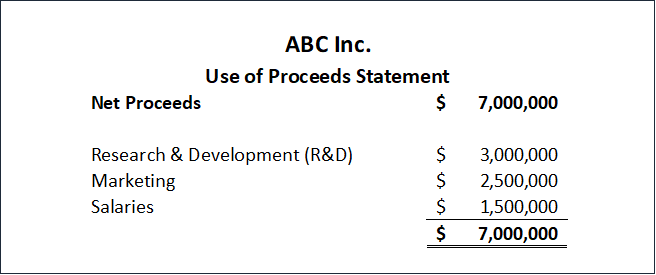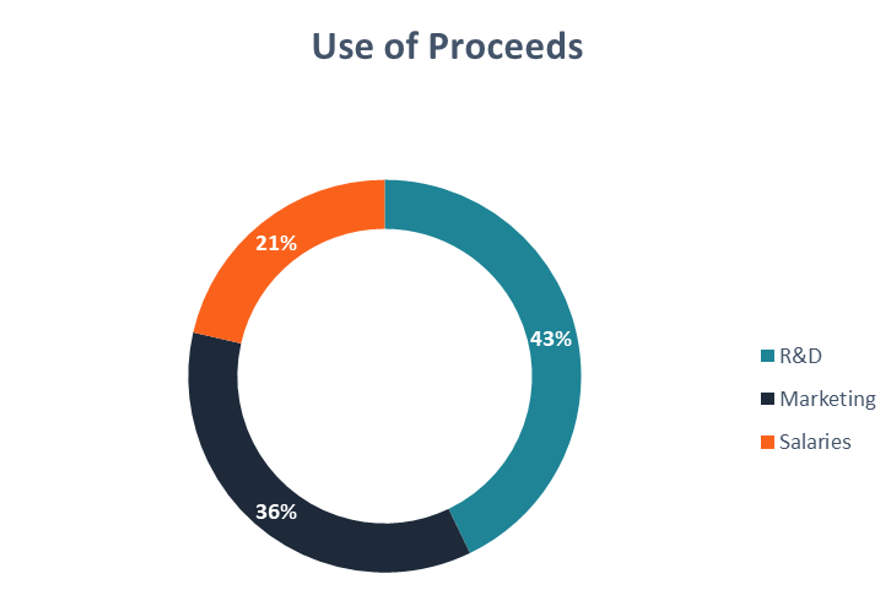
Over 2 million + professionals use CFI to learn accounting, financial analysis, modeling and more. Unlock the essentials of corporate finance with our free resources and get an exclusive sneak peek at the first module of each course. Start Free
The use of proceeds statement is a short document that summarizes how a company that aims to secure additional capital is going to spend the funds. In other words, the document provides the reader with a snapshot of what aspects of the business the company will spend money on.

The use of proceeds statement is commonly included with other documents, such as a business plan or prospectus (a document that provides details about initial public offerings). Note that the use of proceeds statement generally comprises only a small part of these comprehensive documents (no longer than 1-2 pages).
The statement is frequently prepared by startups and early-stage entrepreneurs in order to provide potential investors with an overview of how their invested funds will be spent. However, more mature companies also prepare a use of proceeds statements. A common scenario is when a company is preparing for an IPO or debt issuance.
The use of proceeds can be generally presented in two main formats: as a written summary or as a chart. In either format, the key rule is to keep it simple! Unlike a financial model that includes many assumptions and variables, this is just a snapshot of the proposed allocation of capital being sought from investors.
In the written summary, the company’s management lists the areas of the business that require financing and how much money will be invested in each area. The statement starts with the amount of net proceeds. In real life, the amount of net proceeds is lower than the amount of total proceeds due to the expenses associated with the issuance of shares or debt instruments.
The author can then list the areas of expected expenditures, with the amounts of money allocated to each area. Note that the figures presented in the use of proceeds statement are generally rounded off to the nearest thousand or million. (A written example of the statement can be found above).
Alternatively, the use of proceeds can be presented in the form of graphs or charts. The graph format is particularly suitable for presentations shown to prospective investors. Generally, a pie chart and a donut chart are the primary options for a graphical representation, but other types of charts may also be used.

In some cases, the use of proceeds statement can significantly affect a company’s ability to raise capital successfully. A properly created statement, with a reasonable allocation of money, can be an easy “convincer” for investors. Conversely, if a company fails to show a justifiable explanation of the allocation of funds, investors may not be interested in contributing capital.
Thank you for reading CFI’s guide on the Use of Proceeds Statement. To keep learning and developing your knowledge of financial analysis, we highly recommend the additional CFI resources below:
Learn accounting fundamentals and how to read financial statements with CFI’s online accounting classes.
These courses will give you the confidence to perform world-class financial analyst work. Start now!
Boost your confidence and master accounting skills effortlessly with CFI’s expert-led courses! Choose CFI for unparalleled industry expertise and hands-on learning that prepares you for real-world success.